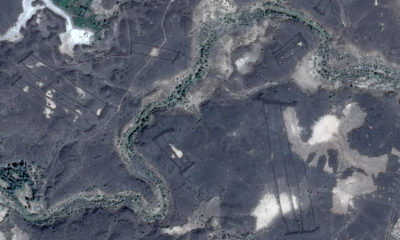British authorities know that a burial site for the victims of the Great Plague or Black Death in most parts of Europe that occurred from 1348 to 1350 was around the city of London. The city was struck a second time with the plague, dubbed the Great Plague of London from 1665 to 1666.They were just unable to pinpoint the exact location. Thanks to the new railway works being carried out around Charterhouse Square, they have been able to identify the burial site of Great Plague victims a few days ago.
The site is for one of the construction project’s 40 sites for the Crossrail project that is expected to be inaugurated in 2018. The project, which cost £14.8 billion, will build a 73-mile or 118-kilometer long high speed railway to link with 37 rail stations around London.
Because the project has an underground component, the construction group is working with the Archeology Department of the Museum of London, as they are likely to come across things that are of archeological significance. So far they have found a transport route that existed during the Bronze Age, the largest (so far) piece of amber found in the country, and skeletons next to Liverpool Street.
Exciting Find
Death is not a pleasant issue to anyone, and being victims of the great Black Plague that hit Europe in the mid-14th century that led to the demise of over 200 million people is no laughing matter either. The discovery is however still an exciting find. In London, about 40,000, which is about half of the population of London at that time, lost their lives to the plague.
The discovered site is the one of the most important sites for the medieval period in the country, according to the Crossrail project archaeologist, Jay Carver because of the historical data it could provide them. The project manager from the Archeology Department of the Museum of London said it is not just the discovery of the burial site; it is also about the incredible data they will be able to gather. They will be able to know more about the population during the 14th century, their way of life, the work they did, their physique, their health and more importantly, they may find the DNA from the bacteria that caused the plague. This could help modern epidemiologists study and follow the development process as well as the spread of the various strains of pathogens from these types of bacteria that are still in existence in the modern world.
Layout of the pit
The construction shaft was 5.5 meters wide. In it workers found the burial pit. It contained 13 fully preserved skeletons that were laid out in a neat pattern of two rows. It indicates that they were laid to rest when the plague had not reached its peak, since other sites discovered had the bodies piled up haphazardly in mass graves.















Facebook
Twitter
Pinterest
Google+
LinkedIn
Email